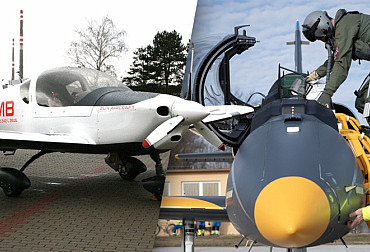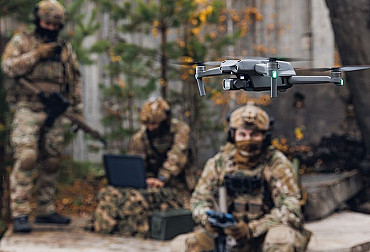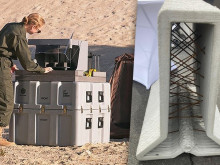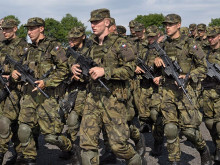Infantry wins battles, logistics wins wars. What about the engineers?
John J. Pershing, commander of the American Expeditionary Force in Europe during World War I, said, "Infantry wins battles, logistics wins wars." This very much reflects the importance of logistics even today, where the importance and role of logistics can be seen very vividly in the conflict in Ukraine.
In peacetime, they test the effectiveness of exercise logistics. The hour of truth will come when logistics support must respond to the demands of actual combat operations. In Ukraine, it is evident that the demands on logistics can be enormous. In particular, material and financial support from other states or allies can still have a significant impact.
Defensive and offensive operations in Ukraine are limited not only by the number and quality of weapons, but also by the quantity and quality of ammunition used. Even temporary shortages can have fatal consequences for the course of combat operations. The acquisition of modern ammunition is and will be financially very costly. Thus, we will probably continue to see more types of ammunition in the arsenal, not only according to use, but also with regard to acquisition cost.
The creation of sufficient ammunition stocks and transport to the destination are both logistical tasks. But the transportation of ammunition and other military materiel is very closely related to military mobility, especially the condition and maintenance of roads or railways, including bridges.
Another component of the armed forces will play an important role in combat operations, especially in the vicinity of the enemy: the engineer troops. Although it is not intended for direct combat, very often the engineer troops find themselves in the front line when advancing, where they remove the enemy's roadblocks (minefields, barricades, tree blocks, etc.). In retreat or other manoeuvres, on the other hand, they conduct barricades to limit the mobility of the enemy and are again very close to the enemy.
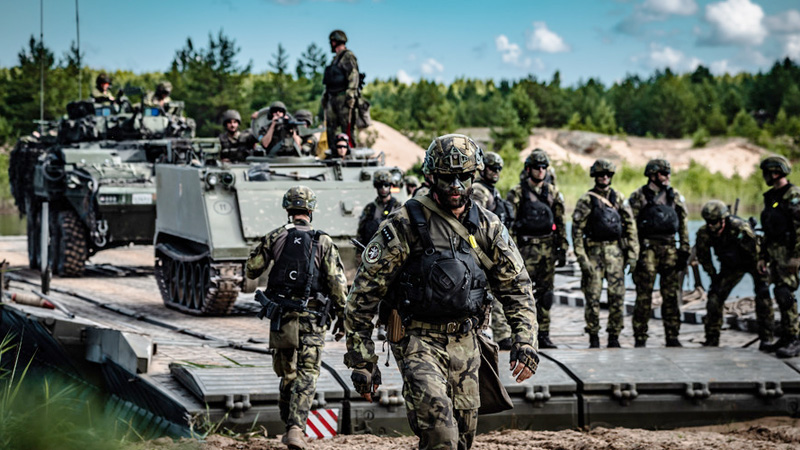
Another important task of the engineer troops is the establishment of bridge or ferry transport sites. An example from history is the construction of two bridges during the Battle of the Berezina River during Napoleon's retreat from Russia, which saved Napoleon from capture and the rest of his army from destruction.
A current example from Ukraine is the deliberate flooding of the terrain near Kiev, which prevented the further advance of Russian troops. The possibility of deliberate flooding, e.g. by bursting dams, must be accounted for in advance analyses based on model programmes.
Future development of the engineer army
The current trends in the development of the capabilities of engineer troops were summarised at the beginning of this year at the "Combat Engineer and Combat Logistics 2023" expert conference in Warsaw. It focused on the use of new technologies, strengthening capabilities in overcoming water obstacles and performing other tasks of engineer security to achieve military mobility.
And also about taking measures to disrupt the movement of the adversary. This includes setting up minefields. Today, it is still advantageous to use a combination of previously established anti-tank mines and new generation mines with modern sensors and controls. Modern mine material is particularly needed in populated areas, at passage points
in minefields and on roads. Modern mines also create a higher deterrent effect.
More types of anti-tank mines will continue to be used, not only according to use but also with regard to acquisition cost, similar to, for example, artillery ammunition. The trend in the development of explosive barriers/installations will be to interconnect them into a single controlled system, the use of which will be in accordance with the chosen combat scenario.
In the context of the dynamic evolution of the battlefield situation, the skilful use of terrain will play an important role. The necessary measures must be implemented quickly, respecting the requirements for the protection of own forces and allies. The speed of manoeuvre and its maximum concealment (camouflage) will increasingly determine the success of combat operations. The speed and fluidity of troop movements can also be ensured by increasing the capacity of modern transportation systems and by establishing more transportation points, thereby reducing the extent of troop concentrations and reducing the risk of attack and consequent losses.
The importance of integrating units in accordance with the tasks to be performed and the acquisition of combat management skills at all levels of command will increase. Increasing demands will be placed on the collection of relevant information, its rapid assessment and sharing.
In the context of the assessment of the conflict in Ukraine, the need to increase the capacity of engineer assets to overcome water obstacles was highlighted due to the anticipated destruction of permanent bridges in the early days of the conflict. Terrain information will also play an important role for the establishment of engineer bridges and, based on its assessment, the selection of the most suitable location for the establishment of bridge crossings. Along with the trend of increasing weight of combat vehicles, in particular tanks and APCs, there is also a growing requirement to provide for their mobility by means of engineer and logistic assets that will be characterised by rapid and autonomous deployment, higher carrying capacity and flexibility of use.
NATO bridge construction capacities are still insufficient. Neither are their MLC (Military Load Classification) requirements addressed. A STANAG is currently being drafted in relation to the MLC of floating bridges to address the effect of asymmetric loading on the bridge. The need is to ensure the mobility of heavy combat equipment, especially tanks, under all conditions and circumstances.
The proposed solutions include meeting the demanding requirements for engineer bridge construction in terms of assembly/disassembly, length (span), higher load capacity (MLC 80+), speed of transportation set-up and the use of remotely operated or autonomous bridge segments (e.g. pontoon components). It must be taken into account that bridge transports will represent a priority target for the adversary.
The Ukrainian war has also highlighted the importance of sufficient bridging capabilities. In particular, the need to connect one part of a bridge to another with a different design has so far been a problem. Now, to ensure interoperability of different bridge types, so-called bridge adapters are being introduced to connect different bridge structures. In the context of engineering and logistics security, unmanned platforms (systems) with a combination of autonomous and semi-autonomous control or remote control will be increasingly used, especially in high-risk situations.
The use of unmanned aerial vehicles is expanding in engineer and logistics security, especially for the collection of necessary data on troop movement routes, e.g. data on road clearance, the presence of explosive and non-explosive roadblocks, or enemy deployment. UAVs also contribute to the protection of moving units, including logistical protection.
New technologies
Also, in the case of the engineer and logistics forces, the equipment and material used is gradually introducing sensors, more powerful batteries (AKBs) and the use of artificial intelligence, especially to quickly assess information and react to the situation. In the context of engineer and logistics security, there is also a wider use of unmanned aerial vehicles, in particular for collecting necessary data, e.g. data on road clearance, the presence of explosive and non-explosive roadblocks or the deployment of the adversary.
UAVs also contribute to the protection of moving units, including logistical units. The role of new technologies in detecting and overcoming various types of explosive roadblocks, including camouflaged booby traps, will continue to increase, particularly along troop movement routes.
Unmanned Ground Vehicles (UGVs) will increasingly be used for mine clearance, in particular for the identification of explosive booby traps and also, for example, to lay and detonate a towed charge to create passageways in mined terrain or to remove mines/charges. Various types of sensors will increasingly be used to protect engineer units
and electronic warning systems.
Cooperation
One of the prerequisites for increasing the resilience of national armed forces is close cooperation with the defence industry and the use of joint acquisition tools and institutions such as NSPA within NATO and EDA at the EU. In the context of interoperability requirements of NATO units, it is necessary to address the joint procurement of military equipment in accordance with approved standards, but also to create prerequisites for the integration of industry.















